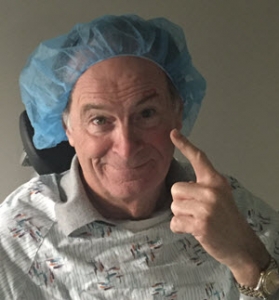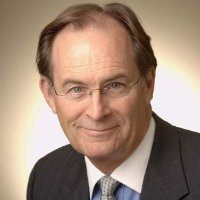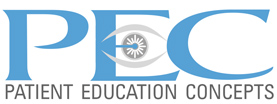 How many times have you heard that expression? I always heard it when I was making outrageous statements about how much better the Astros or Texans were versus the Royals or the Patriots. But I have “put my money where my mount is” twice now as it relates to my eyes.
How many times have you heard that expression? I always heard it when I was making outrageous statements about how much better the Astros or Texans were versus the Royals or the Patriots. But I have “put my money where my mount is” twice now as it relates to my eyes.
I had RK in 1982. I started wearing glasses at age 10. “Four Eyes” was my handle when surfing with my glasses strapped like a tourniquet to my face. Back in the 60s, I remember saying, “If they ever invent a cure for nearsightedness, I’d take it.” (I was hoping it would be a pill!) But even though it involved cutting your cornea up with 16 incisions, like a large Papa John’s pizza, I “put my money where my mouth is” and had it done!
That decision was both life changing and career changing. I got rid of my -6.50D coke bottle lenses and produced my first ophthalmic video on RK to start my ophthalmic patient education business. But time passes quickly when you are having fun…and so too go the eyes. I enjoyed 10 glasses-free years until presbyopia hit and RK’s hyperopic shift pushed me to all the way to a +4.00D.
My patient education business continued to grow over the years to the point that I have now provided patient education products to over 8500 ophthalmologists. To this day, I eat, drink and sleep ophthalmology. Cataracts were something I knew I would eventually experience, but I hoped not until much later in life. However, as I hit the Medicare eligibility bell, I could no longer see where my golf ball landed. Two weeks ago while holding up a magnifying glass to read something on my computer, I made the decision to “put my money where my mouth is” again, and sign up for cataract surgery.
In 2010, Dr. Stephen Slade performed the first femtosecond cataract procedure in the US. Since his call to me to develop some Laser Cataract Surgery educational and promotional materials for his patients, I have produced thousands of brochures and numerous videos designed to help doctors convert more of their patients to femtosecond cataract surgery. I am a true believer that Laser Cataract Surgery is safer and better than manual surgery but always assumed my RK would prevent them using the laser and also assumed I would only qualify for a monofocal IOL.
Most of you know that non-virgin corneas, especially corneas like mine that were flattened using a broken Gillette Blue Blade stuck in an X-Acto knife, can complicate cataract surgery and the ability to predict visual outcomes. I was not expecting to experience the type of results I had heard from interviewing over 200 cataract patients during my career.
On my initial evaluation at Slade & Baker Vision Center, I was put through an assembly line of one $50,000 diagnostic machine after another. I was familiar with most of the machines, but it really impressed me how far ophthalmic technology had come since the old A-scan days. Each test was providing my doctors additional scientific data to gain deeper insight into the ideal operative plan for my bunged up eyes. It also made it clear to me that the high cost of premium cataract surgery is high for a reason. Doctors who want to provide their patients with the best possible outcomes must invest in the best and latest technology to be able to do so.
Dr. Slade’s partner, Dr. Rick Baker was actually the doctor that managed my care when I had RK and I trusted them both implicitly. After viewing all the data and having a dilated retinal exam, Dr. Baker and Dr. Slade sat with me for 15 minutes, focusing on how I wanted to see post operatively and what they thought would be the best course of action for me to achieve my goals.
I was extremely excited to hear Dr. Slade say he could use the femtosecond laser to do everything but the initial incisions. Because the RK incisions go all the way to the limbus, it would have to be a tunnel incision through the sclera. They both recommended the Crystalens in my non-dominant eye, targeting a -1.00D to give me excellent computer vision and once it heals, correct my dominant eye for distance, most likely with another Crystalens. The Crystalens should help to offset the daily fluctuations in acuity that I still have from the RK. It was a no brainer. I said, “Let’s roll!”
Almost every cataract patient I have interviewed for my videos would say two things: “The surgery was a piece of cake.” and “When can I have the other eye done?” My sentiments exactly!
I could not believe it! ZERO pain and I mean ZERO. I went home, and slept for 3 hours. Woke up, had dinner and a glass of wine and went to bed at 9:00 PM and did not wake up until 8:00 AM the next morning. I could not believe how well I could see in the operated eye. It was a bit blurry and a little hazy. At my 11:00 AM follow-up appointment, I measured 20/25 and they said my eye was healing nicely. On the way home, we stopped at an optical store and I had the left lens in my glasses replaced with a clear, blank lens. By that evening, the haze was almost completely gone and I was reading subtitles on the TV from 20 feet away…perfectly clear!
I have been very fortunate to have spent the last 34 years working exclusively with eye surgeons. These guys create routine miracles every day of their lives and get to go home every night with a huge smile on their face, knowing they have helped thousands of people, just like me, restore their vision and enhance their enjoyment of life.
This experience has confirmed what I have felt all of my working career…. that I truly love what I do. I get to play a small, but self-satisfying role in bringing joy and happiness to thousands of patients by producing products that help them understand their options and encourage them to take advantage of all the ophthalmic skill and technology that is available when their lives are challenged by cataracts.
I always find it interesting how people play the cards they are dealt in life. It does make me wonder, what I would have been doing for the last 34 years if I had never been called “Four Eyes”.

Robert Watson
President
Patient Education Concepts (PEC), located in Houston, Texas, is a marketing products and services company. PEC’s president and founder, Robert Watson, has produced and marketed patient education materials for the ophthalmic industry since 1982. PEC has provided their products to over 12,000 eye care professionals in the United States and in over 30 countries.
